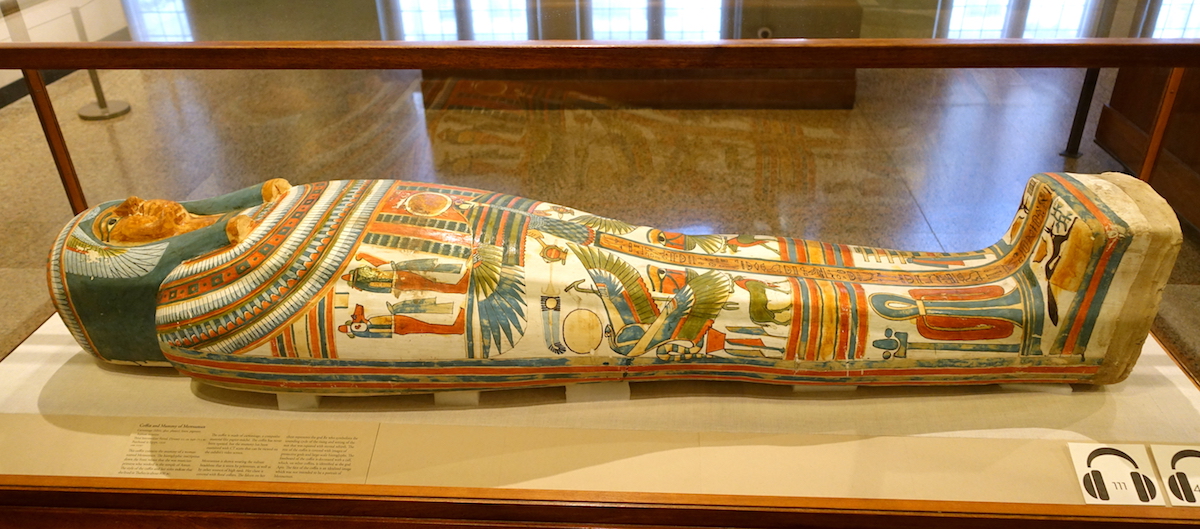Egyptian Mummy Coffin

Annotation
The same image can be valued differently over time and in different cultures. Take, for example, the long journey in time and space of images and hieroglyphic writing that cover the surfaces of the coffins of mummies from Egypt. In their own period, several thousand years ago, the presence of the images and writing were an essential element in the ritual of death and burial of an important individual. These images were hidden from the view of human beings. Today, many have been removed from their ritual site and these same images are displayed in museums in Cairo, Boston, New York, and elsewhere. To the contemporary viewer these images mean something quite different. They are available for evaluation or are consumed as art and as history. To the contemporary Egyptian museum visitor who perceives these images and their materiality (the coffin they are on and the fineness of the painting), they represent the past history of his or her nation. To other museum visitors, these same images on the coffin represent a fascinating ancient civilization other than their own. Still others feel that it is inappropriate for the public to view these excavated images and the bodies that they shield. These images are also understood and valued in other ways. Visitors pay entrance fees to museums to see these images from the past. Those who do not visit the museum can see pictures of the images in books. Photographs of these images, for which copyright fees have usually been paid, are used in art books, history books, and travel guides or as posters to be hung on walls. Libraries and individuals in turn purchase the books in which the representation of the image is presented. In these many ways, the image is valued and consumed in today’s societies and has multiple meanings across time, culture, and place.
This source is a part of the Analyzing Photographs methods module.